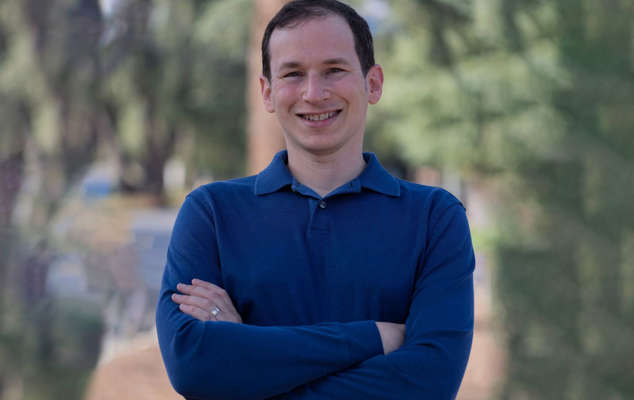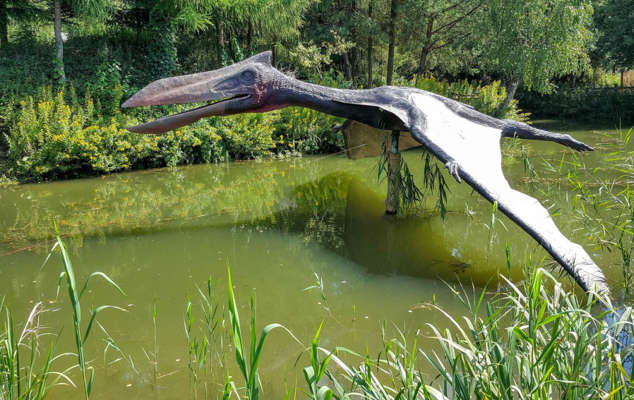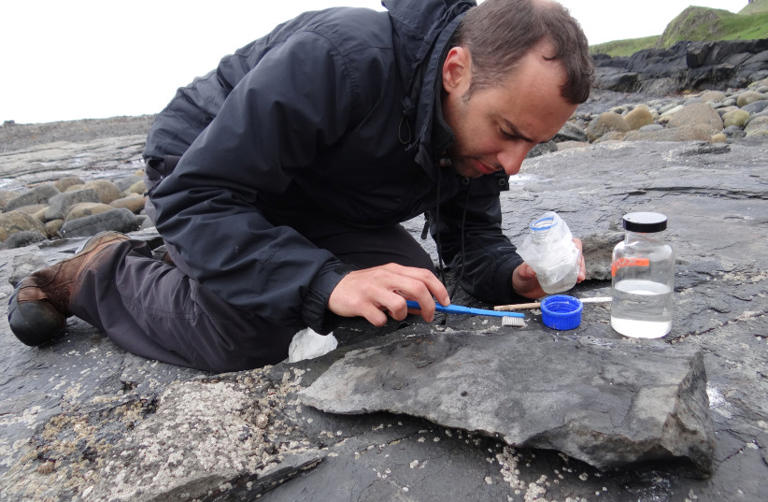A Rothschild is writing the book about Jewish space lasers conspiracy theory

By ASAF SHALEV/JTA -
The Jerusalem Post
© (photo credit: COURTESY MIKE ROTHSCHILD)

To a conspiracy theorist, last week seemed to offer evidence that the Rothschild family is plotting to undermine Elon Musk.
It started when the Tesla tycoon bashed the Democratic Party and said in a tweet that he would switch to voting Republican. A user named David Rothschild responded, mocking Musk and portraying him as an entitled whiner because Musk comes from a rich white family that benefitted from apartheid in South Africa.
Then, Rothschild himself became the target of ridicule as other users, predictably, pounced on his last name to assert that the scion of the Jewish banking family had no standing to criticize someone over issues of social privilege. “A Rothschild complaining about other people’s privileges. The joke tells itself,” one user wrote.
As if on cue, another Rothschild soon chimed in to defend the Musk mocker. “David M. Rothschild is an NYC-based economist,” tweeted a user named Mike Rothschild. “He is not related to the banking family. People might be thinking of David M. de Rothschild, an adventurer and environmentalist, 5x great-grandson of Mayer Amschel. Not all Jews are related.”
That the last names are purely coincidental is exactly the kind of lie a Rothschild would try to peddle — that is, if you’re a conspiracy theorist.

Trump supporters display QAnon posters at a 2018 rally in Florida. Recently, Latinos in the state have been inundated with anti-Semitic messages, many relating to the false QAnon conspiracy theory. (credit: THOMAS O'NEILL/NURPHOTO VIA GETTY IMAGES)
In reality, neither user has anything to do with the famous family. David is an economist. Mike, meanwhile, is a professional buster of conspiracy theories.
Last year, Mike released a book called The Storm is Upon Us an account of the QAnon movement. The irony of his last name is not lost on him, of course. Rothschild’s next book, which is still early in the writing process, will focus on the illustrious banking family that has been the target of antisemites for 200 years. The title is Jewish Space Lasers.
The Jewish Telegraphic Agency caught up with Mike Rothschild for an interview about his book and what it’s like to do his work with such a last name.
JTA: So, for the record, how many banks do you own, and which parts of the global economy do you personally control?
Rothschild: [Laughs] I don’t talk about that. Those are the things you’re not supposed to know about.
It’s so funny because so much of the paranoia and the conspiracy theories about the Rothschilds stems from stuff that doesn’t exist or that people misunderstand. For example, central banks don’t have owners, they’re the monetary arm of a country. There are lots of private banks, but that’s not what they’re talking about. It’s just wild the stuff people have talked themselves into believing.
What is the craziest conspiracy theory you’ve encountered about yourself?
Oh, god, there are tons of them. That typical stuff like that I am part of this family that has $500 trillion and owns everything. I’ve also had people who think that I helped start QAnon so that I can make money off it.
There are people who think I work for Russian intelligence or that I work for Mike Flynn and my whole job is to get people involved in Q and spread disinformation about who started it so that people don’t find out who really started it.
People just make things up about you and there’s nothing you can really do about it. You can’t engage with it because then you’re validating what these people think and you’re giving them attention that they don’t deserve. And you can’t prove it’s not true. They just can’t prove it is true. And unfortunately, the way proof works is kind of misunderstood by a lot of people. I don’t have to prove this stuff isn’t true. They have to prove it is. They just don’t do it.
How did you get into researching and reporting on conspiracy theories and fringe movements?
I’ve always been interested in conspiracy theories as stories. When I was in college, I spent a lot of time listening to Coast to Coast AM, the Art Bell radio show where he would talk about UFOs, crop circles, the face on Mars — all this stuff that people that I knew didn’t talk about. These were not topics for discussion in regular society. This was the domain of crazy people.
And I thought, well, I am not a crazy person. I just enjoy these stories. I enjoy sort of picking apart why people believe this stuff. And after a while, I started to write for the blog of a critical thinking podcast that I’m a big fan of called Skeptoid. And I did that for a year, or a year and a half, just writing once a week, and I really enjoyed it. And I found that I was good at it. That started to lead to jobs in journalism.
This wasn’t something that people were writing about even up until Trump. This was the domain of weirdos. Legitimate journalists didn’t talk about conspiracy theories or hoaxes. You didn’t give it oxygen. You ignored it because then it would go away. Well, now we know that ignoring these things does not make them go away. It just makes them worse because there’s no one confronting it. There’s no one calling it out.
So what drew my attention to doing it as a profession was realizing that this stuff is everywhere and people are not talking about it in the way that they should be.
A lot of people have conspiratorial beliefs and they lead normal lives. So when does belief in conspiracy theories cross the line and become a problem? People have all kinds of weird beliefs — why does it matter?
For most people, conspiratorial beliefs are just a fun thing to talk about with your friends, things that you kick around. Everybody believes something unevidenced and weird that other people don’t really want to hear about. It could be as simple as arguing with your friends that a soccer game was fixed or that Melania Trump got replaced by another Melania Trump. It doesn’t take over your life. It doesn’t drive you to cut yourself off from the world or commit an act of violence. For the vast majority of people, it’s fine. I tell people, “You don’t need to try to get somebody out of beliefs like that. They’re not hurting anyone.”
It’s just that some people do hurt people — some people do take it too far, and then you do have acts of violence. You do have people cutting themselves off from their families, people harming themselves by not getting vaccinated or not taking COVID precautions, and at the very worst of it, you have something like Jan. 6, which is the very, very edge of conspiratorial violence, and most people are not going to do that. And even most people who were there didn’t commit an act of violence. That’s when I think you do need to start stepping in and paying attention to it.
The title of your next book, “Jewish Space Lasers,” refers to a conspiracy theory about the Rothschilds causing the California 2018 wildfires using satellites. It became well known because it surfaced when Marjorie Taylor Greene had promoted the theory a few years before becoming a congresswoman. So how did your book come about?
I wanted to write about the Rothschilds for a long time, and I had written about it before. I’ve written about the Rothschild family, the Facebook memes and some of these really bizarre ideas like that Hitler was secretly the son of a Rothschild baron who impregnated a maid in Austria. Then the Marjorie Taylor Greene thing that happened. She put that Facebook post in 2018 during the wildfires. And I remember I wrote quite a bit about the directed energy weapon conspiracy theory because a lot of people were talking about it.
The head of Pacific, Gas & Electric was on the board of a Rothschild company — the Rothschild companies, by the way, don’t even have involvement from the Rothschilds. A lot of it’s just a name at this point. It’s just really wild the way this name is like a magnet for cranks and it has been for the last 200 years. The book is about trying to figure out why it became this wealthy Jewish family and not another wealthy Jewish family. Or why not the Rockefellers, the Morgans, the Waltons? There are other American dynasties and the Rothschilds are not even an American dynasty. They didn’t even do particularly well in America. They really kind of failed while trying to break into New York finance in the 1800s. Why is it such a magnet for this kind of crank stuff?
Are you talking to the family?
I tried to when I started working on the book. I reached out to a bunch of different members of the family, and they don’t discuss this. They don’t talk about it. They don’t write about it. There’s nothing even in their archives about it. I talked to someone at the Rothschild family archives in London. She told me that they don’t want to put themselves in the position of proving a negative. If they come out and say, “Well, we don’t have $500 trillion. We didn’t fund both sides of every war,” they can’t prove that they didn’t. Again, the people who make these accusations have to prove that they did. But that’s not how this stuff works in popular culture. So rather than having to prove it’s not true, they just don’t discuss it.
It’s not the first book that touches on the topic of the Rothschilds. So what new ground do you hope to break?
I’m trying to run down this specific aspect of the family’s legacy, or why these conspiracy theories have stuck for so long. There are quite a number of books on the Rothschilds. There were a lot of books written about them in the ’60s and ’70s, but they’re very dishy; they’re all quite a bit about wealth and opulence.
Then there was Niall Ferguson’s two-volume book “The House of Rothschild,” which I’m using quite a bit, but that’s very focused on banking. And the minutiae of loans. Also, it ends in 1999, which of courses leaves out the internet.
So there’s never really been a book about why this particular family is such a magnet for conspiracy theories. And, and why they’re always kind of the family that you turn to when you need a pop culture reference about the Jews and bringing about wealthy Jews.

Nowadays it’s not just the Rothschilds. We have another Jew that antisemites like to talk about: George Soros. Which one is the bigger kind of target of antisemitic conspiracy theories at this point?
It’s probably Soros just because he’s more visible. Soros does interviews and he has his name on a lot of things. His Open Society Foundations makes a lot of very public gifts to philanthropic organizations. The Rothschilds are much quieter. But a lot of the tropes are recycled, so you get tropes about the Rothschilds that are just reused for Soros.
Did you see the news that Israel has developed a new military system to shoot down missiles using laser beams? It sounds a lot like a Jewish space laser.
Oh is that true? [Laughs] I’ll have to add that to the book, life imitating conspiracy theory, as happens very often.

















